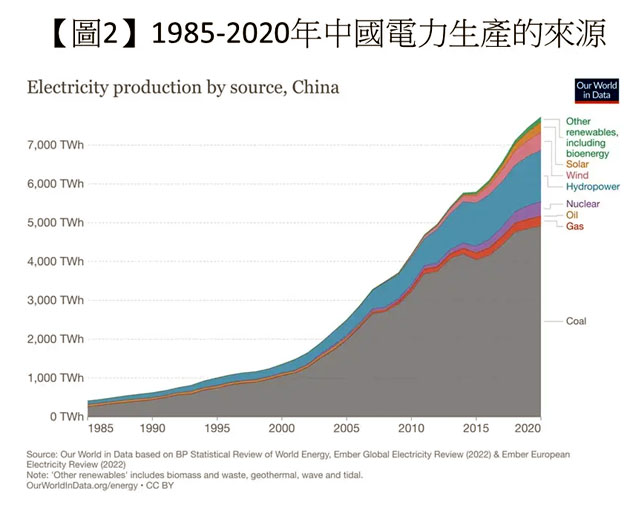Recent Posts
- Charts: Why 80% of Americans Can’t Save Money
- Chart: South Korea Now Exporting More to US than China
- Charts: Gold’s Resilience Over Rising Bond Yields and a Strong US Dollar
- Chart: Extreme Cocentration of the U.S. Stock Market Measured by Market Cap of the Largest Stock Relative to the 75th percentile Stock
- Music Video: Fire
- Infographic: The Growth of $100, by Asset Class (1970-2023)
- China Home Prices Fall as Slump Shows Few Signs of Abating
- Chart: China on Track to Become World’s Largest Luxury Market
- IMF: World Economic Outlook April 2024
- Humour: News in Cartoon
- Infographic: The World’s Top Flight Routes, by Revenue
- Tech War: How Chinese Scientists Rigged a Low-cost AI Computer Chip to Power a Hypersonic Weapon
- China’s First-quarter GDP Growth Beats Expectations at 5.3%
- Study: Exercise Could Help Your Heart by Calming the Brain
- In Pictures: Food of Samrub Samrub Thai in Bangkok, Thailand
- Infographic: The Size of the Global Senior Population
- Samsung to Get Up To $6.4 Billion in US Grants for Chip Plants
- Chart: March Was the 10th Hottest Consecutive Month on Record
- Chinese Surnames Are Changing. Why?
- Chart: Japan Greenhouse Gas Emissions to be 1.135 billion Tons in FY22, Lowest Since FY1990
- Humour
- Infographic: Mild Cognitive Impairment
- What is Mild Cognitive Impairment?
- Chart: Southeast Asia’s Preferred Ally Switches in Favor of China
- Study: Seafood Can Pass on PFAS ‘Forever Chemicals’
- Humour: News in Cartoon
- Infographic: Where Does One U.S. Tax Dollar Go?
- CATL Unveils TENER, the World’s First Five-Year Zero Degradation Energy Storage System with 6.25MWh Capacity
- China’s March Exports and Imports Shrink, Miss Forecasts by Big Margins
- Why the Department of Justice Wants to Take Down Apple
- In Pictures: 1996 Vector M12
- Gene Discovery May Lead to Better Alzheimer’s Treatments
- Chart: The Value Gap Between the Gold Price and Gold Miners
- Chart: Japan Business Bankruptcy Rose Above 9,000 Cases in 2023
- Chuckles of the Day
- Chart: Beats per Minute – The Pace of Hit Songs
- China’s ‘Unrestricted Warfare’: Is It Here Already?
- Chart: China Rises in Ranking of Favored Foreign Investment Destinations
- Gold vs. Bitcoin: Comparing the Top 10 Monetary Characteristics
- Music Video: Laughter in the Rain
Archives
- April 2024
- March 2024
- February 2024
- January 2024
- December 2023
- November 2023
- October 2023
- September 2023
- August 2023
- July 2023
- June 2023
- May 2023
- April 2023
- March 2023
- February 2023
- January 2023
- December 2022
- November 2022
- October 2022
- September 2022
- August 2022
- July 2022
- June 2022
- May 2022
- April 2022
- March 2022
- February 2022
- January 2022
- December 2021
- November 2021
- October 2021
- September 2021
- August 2021
- July 2021
- June 2021
- May 2021
- April 2021
- March 2021
- February 2021
- January 2021
- December 2020
- November 2020
- October 2020
- September 2020
- August 2020
- July 2020
- June 2020
- May 2020
- April 2020
- March 2020
- August 2017
- June 2017
- May 2017
- March 2017
- February 2017
- January 2017
- December 2016
- November 2016
- October 2016
- September 2016
- August 2016
- July 2016
- June 2016
- May 2016
- April 2016
- March 2016
- February 2016
- January 2016
- December 2015
- November 2015
- October 2015
- August 2015
- July 2015
- June 2015
- May 2015
- April 2015
- March 2015
- February 2015
- January 2015
- December 2014
- November 2014
- October 2014
- September 2014
- August 2014
- July 2014
- May 2014
- April 2014
- March 2014
- February 2014
- January 2014
- December 2013
- November 2013
- October 2013
- September 2013
- August 2013
- July 2013
- June 2013
- May 2013
- April 2013
- March 2013
- February 2013
- January 2013
- December 2012
- November 2012
- October 2012
- September 2012
- August 2012
- July 2012
- June 2012
- May 2012
- April 2012
- March 2012
- February 2012
- January 2012
- December 2011
Categories
- Aging
- Analysis
- Art
- Banking
- Bond
- Business
- Classic Car
- Climate
- Commercial Real Estate
- Commodity
- Construction
- Consumption
- Culture
- Currency
- Debt
- Demographic
- Economy
- Education
- Employment
- Energy
- Entertainment
- Environment
- Explainer
- Finance
- Food
- Gold
- Gold Stock
- Health
- History
- Housing
- Humour
- In Pictures
- Infographic
- Information
- Interview
- Investment
- Life
- Links
- Manufacturing
- Medicine
- Michelin Restaurant
- Military
- Monetary
- Money
- Music
- News
- Opinion
- Person
- Personal Wealth
- Policy
- Politics
- Real Estate
- Report
- Research
- Restaurant
- Science
- Services
- Society
- Stock
- Stock Market
- Study
- Technology
- Tourism
- Trade
- Trading
- Transportation
- Travel
- Uncategorized
- Video
- Wealth
AI
Alzheimer's
Asia
Australia
Battery
Bitcoin
Brain
Canada
Car
Car Sales
Central Bank
China
Cities
Coal
Copper
Countries
COVID-19
COVID-19 Origin
COVID-19 Vaccination
COVID-19 Variant
CPI
Crude Oil
Debt
Dementia
Democracy
Electric Cars
Electricity
Electric Vehicles
EU
Europe
Eurozone
EV
Exercise
Federal Reserve
G7
Gasoline
GDP
Germany
Global
Happiness
Heart Health
Hong Kong
India
Inflation
Interest Rate
Internet
Israel
Japan
Lithium
Media
Military
Mortgage
Oil
Pandemic
PMI
Recession
Retail Sales
Robotic
Russia
S&P 500
Semiconductor
Singapore
Sleep
Smartphone
Social Media
Solar
Taiwan
UK
Ukraine War
US
USD
US Treasuries
Vaccine
World
Yuan















